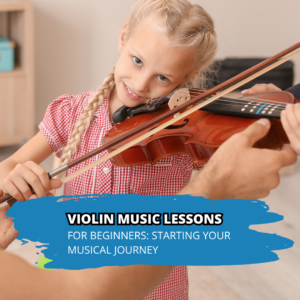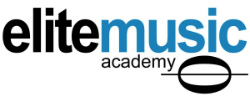Violin Music Lessons for Beginners: Starting Your Musical Journey

The journey of learning the violin can be a transformative experience that not only enhances musical skills but also fosters personal growth. The violin, with its rich history and expressive range, offers a unique opportunity for creative expression.
Setting Realistic Expectations for Beginners
Beginning your musical journey with violin music lessons requires setting realistic expectations. Mastery of the violin is a long-term commitment that demands consistent practice and patience. Beginners should focus on progress rather than perfection, celebrating small achievements along the way. Initial lessons will concentrate on developing a solid foundation, with emphasis on posture, bow grip, and basic finger positioning. Understanding that challenges are part of the learning process helps maintain motivation and enthusiasm for continued learning and improvement.
Anatomy of the Violin
For those new to violin music lessons, gaining an understanding of the anatomy of the violin is the first step towards mastering this instrument.
The Basic Parts of the Violin
The violin consists of several key components that contribute to its unique sound: the body, neck, fingerboard, bridge, strings, and bow. Each part plays a crucial role in sound production and quality. The body acts as a resonating chamber, amplifying the vibrations of the strings. The neck and fingerboard provide the framework for note pitches, while the bridge supports the strings and transmits vibrations to the body. Knowing these parts and their functions is essential for beginners in violin music lessons, as it influences techniques and sound production.
How Each Part Affects Sound Production
Understanding how each part of the violin affects sound production is vital for beginners. The material and construction of the body impact the instrument’s tone and resonance. The tension and material of the strings influence pitch and sound quality. The bow, made from horsehair stretched between the tip and frog, creates sound by friction against the strings. Manipulating bow speed, pressure, and contact point allows for a wide range of dynamics and articulations. This knowledge, gained through violin music lessons, is fundamental in learning how to expressively play the violin.
Basic Bowing Techniques
The way a musician wields the bow determines the tone, volume, and quality of the sound produced. Learning the basics of bowing is a crucial milestone for students in violin music lessons, opening up a world of musical possibilities.
Holding the Bow Correctly
The foundation of good bowing technique begins with the correct hold. The bow should be held with a relaxed and natural grip, allowing for fluid movement and control. The thumb rests in the frog’s notch, with the fingers gently curving around the stick. This grip facilitates ease of movement across the strings, enabling beginners to explore various bow strokes. Violin music lessons emphasize the importance of a proper bow hold as it significantly affects tone quality and bowing precision.
The First Bow Strokes
Mastering the first bow strokes is a milestone in violin music lessons. Beginners start with simple, straight bow strokes on open strings, focusing on maintaining a consistent sound. This involves learning to control bow speed and pressure, essential for producing a clear, even tone. Initial exercises include detache, where each stroke is played separately, and legato, where notes are played smoothly connected. These fundamental bowing techniques form the basis for more advanced bow strokes, enabling expressive playing.
First Simple Songs to Learn
The initial selection of songs in violin music lessons serves as the cornerstone of a budding musician’s repertoire. These first pieces are more than just exercises; they are the building blocks of a lifelong musical journey.
Choosing Your First Songs
Selecting the right first songs is crucial in violin music lessons to keep beginners motivated and engaged. Simple melodies that incorporate basic finger patterns and rhythms help reinforce fundamental skills. “Twinkle, Twinkle, Little Star” and “Mary Had a Little Lamb” are excellent choices for beginners, offering the opportunity to practice open string notes and simple finger placements. These songs also allow for the application of basic bowing techniques learned in earlier lessons.
Tips for Learning and Memorization
Effective learning and memorization techniques can significantly enhance the process of mastering the first songs. Breaking the piece into manageable sections and practicing each part slowly ensures thorough understanding and memorization. Visualization of finger placements and bow movements helps in internalizing the piece. Consistent, focused practice, combined with listening to recordings of the songs, aids in developing aural skills and musicality. These strategies, emphasized in violin music lessons, support beginners in quickly learning and memorizing their first songs.
Effective Practice Tips
Practice is the key to success in any discipline, and violin playing is no exception. Effective practice strategies enhance learning efficiency.
Establishing a Practice Routine
Developing a consistent practice routine is essential for progress in violin music lessons. Beginners should aim for regular, short practice sessions, gradually increasing the duration as concentration improves. Setting clear, achievable goals for each session helps maintain focus and direction. Incorporating a variety of exercises, including scales, arpeggios, and pieces, keeps practice sessions engaging and covers different aspects of playing. This structured approach ensures steady improvement and builds a solid foundation for advanced techniques.
Overcoming Common Challenges
Every beginner faces challenges in learning the violin, but these can be overcome with perseverance and the right strategies. Common issues include difficulty with intonation, bow control, and finger placement. Slow, mindful practice with a focus on one aspect at a time helps in addressing these challenges effectively. Seeking feedback from teachers in violin music lessons provides valuable insights into areas for improvement. Additionally, listening to professional recordings inspires and informs about the possibilities of musical expression on the violin.
Why Choose Elite Music Academy for Violin Music Lessons
Our experienced instructors are dedicated to providing personalized, comprehensive training that caters to the unique needs of each student. With a focus on building a strong foundation in technique, musicality, and theory, we ensure that our students develop the skills necessary for a fulfilling musical journey. Our supportive community and wonderful teachers offer an ideal environment for learning and growth. At Elite Music Academy, we believe in nurturing the love for music in our students, making us a great choice for those starting their musical journey on the violin.
FAQs
1. What age is appropriate to start violin music lessons?
While there’s no one-size-fits-all answer, children as young as three or four years old can begin violin lessons. The key is to ensure they have the attention span and physical coordination needed. Adult beginners can start at any age!
2. How long does it typically take to become proficient in playing the violin?
Proficiency depends on consistent practice and dedication. Most students can achieve a basic level of proficiency within a few years of regular study and practice, but mastering the violin can take a lifetime of dedication.
3. What type of violin should a beginner purchase?
Beginners should start with a student violin size appropriate for their age and physique. Consultation with a teacher or violin shop can help ensure a good fit.
4. How do I deal with frustration during practice?
Take breaks, set small, achievable goals, and remember that progress in music, as in any skill, comes with time and patience. Seek encouragement and advice from your teacher.
5. Can learning the violin benefit children in their academic studies?
Yes, studies have shown that learning a musical instrument like the violin can improve memory, attention, and language skills, potentially leading to better academic performance.
6. How can I maintain my violin and bow?
Regular maintenance includes wiping rosin off the violin and strings after playing, rehairing the bow as needed, and ensuring the instrument is stored in a stable, humidity-controlled environment.






